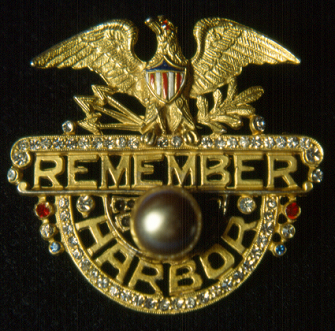Newsletter Review
Edited and published by Gary Bedingfield, monthly newsletter via mail and e-mail, free, www.baseballinwartime.com
“From the owner of a National Football League team to the slugging outfielder of a champion softball club, from the former bow man of a Pennsylvania varsity crew to a title-winning discus thrower, the sports world already is feeling the effects of the Selective Service Act,” the Associated Press reported in January 1941, a few months after the draft had begun. For a citizenry increasingly sports-mad, especially about football and baseball, things would quickly get worse.
Baseball would suffer most. According to one estimate, more than 5,000 professional players of varying ability and renown served in the US armed forces during World War II. And although big-time big-leaguers like Joe DiMaggio, Hank Greenberg, and Bob Feller got most of the headlines, their teammates’ departures counted no less.
 Within months of topping the Brooklyn Dodgers in the 1941 World Series, the New York Yankees watched their entire starting nine trade major-league woolens for military drab. By April 1944, only 40 percent of pro baseball players remained from the 1941 rosters. They now shared playing time with aging, career minor leaguers, teenaged prospects, and military draft board rejects. Meanwhile, the much-missed 60 percent formed the backbones of formidable American military service teams such as the Great Lakes Naval Training Station Bluejackets (better known as a football powerhouse), the Twentieth Armored Division Armoraiders, and overseas outfits like the 26th Infantry Blue Spaders and the Eighth Army Chicks.
Within months of topping the Brooklyn Dodgers in the 1941 World Series, the New York Yankees watched their entire starting nine trade major-league woolens for military drab. By April 1944, only 40 percent of pro baseball players remained from the 1941 rosters. They now shared playing time with aging, career minor leaguers, teenaged prospects, and military draft board rejects. Meanwhile, the much-missed 60 percent formed the backbones of formidable American military service teams such as the Great Lakes Naval Training Station Bluejackets (better known as a football powerhouse), the Twentieth Armored Division Armoraiders, and overseas outfits like the 26th Infantry Blue Spaders and the Eighth Army Chicks.
Even though the major-league product wasn’t quite the same, Americans continued to fill ballparks, drawn by the stadiums’ unchanged serenity and spurred by a love of the game. The sun-bathed diamonds never failed to disappoint. Dedicated to keeping this spirit alive, Gary Bedingfield offers his free monthly Baseball in Wartime newsletter to those who share his passion. A resident of Scotland who inherited his love of America’s pastime from his well-traveled father, Bedingfield is a former standout amateur ballplayer and British Olympian. Coupling his love of the game with an interest in World War II history, he launched a website in 2001 that offers capsule biographies of war-era players and highlights of American armed forces baseball. Five years later he relaunched a more elaborate site built around extensive player-soldier biographies, team rosters and histories, and feature articles. Bedingfield dispatched his first newsletter in September 2007, and more than 3,000 subscribers now receive it.
Full of commentary, news of surviving ballplayers, and light book reviews, each six-to-seven-page issue of the Baseball in Wartime newsletter touches on a specific theme. In the December 2008 issue, for instance, Bedingfield’s spotlight fell on the 1946 GI baseball campaign and the second GI World Series, in which the 60th Infantry Regiment (9th Division) Go-Devils slugged their way past the 508th Parachute Infantry nine in six games to become European theater champs. Excellent photos accompany the story. The November 2008 issue filled readers in on a handful of lesser-known players who survived the war, and, in some cases, continued their baseball careers.
The September 2008 issue offered biographical capsules on big-league regulars from Luke Appling to Early Wynn who served in the wartime armed forces. Brief but occasionally colorful, these bios cover the baseball and military careers of each player-turned-soldier.
Bedingfield dedicated his October 2008 issue to some hundred ballplayers killed during the war. If they lacked the big-league resumes of Stan Musial, Joe DiMaggio, and others, these generally little- known minor-leaguers saw considerably more action—and paid the price for it. October’s profiles include a Texas farm boy named Jack Lummus, a flashy centerfielder and pro football prospect who traded his spikes for a marine uniform. As a platoon leader with the 27th Marines, Lummus earned the Medal of Honor while losing his life on Iwo Jima in March 1945. His story offers a taste of a book-length project Bedingfield, who contributed to the recently published study When Baseball Went to War, has planned on the subject.
Baseball in Wartime is short on detail and background and features quick facts and stats rather than colorful storytelling. Readers may occasionally find themselves grasping for clarification, interesting anecdotes, or more material, about the structure, makeup, quality, and logistics of armed forces baseball, for example. But most will also enjoy the newsletter’s spirit, especially old-time baseball fans. And its price—free—is certainly right. For information on how to subscribe via regular mail or e-mail, drop Bedingfield an e-mail at garybed@gmail.com or visit his website at www.baseballinwartime.com.
—Eric Ethier
Wakefield, Rhode Island



FOLLOW US »
